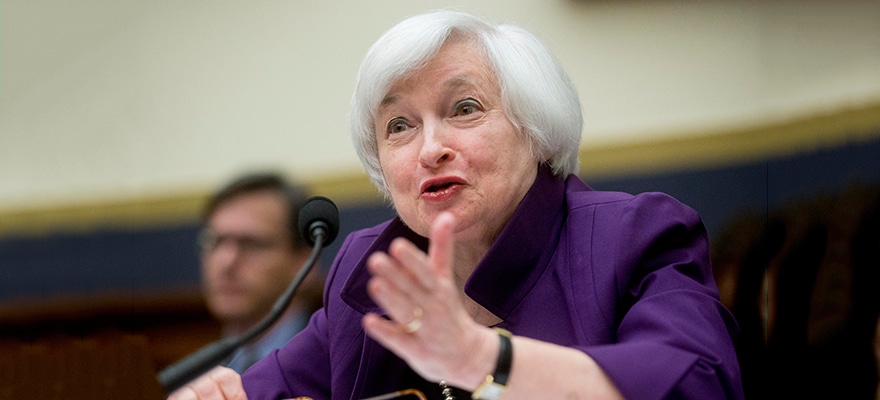The meeting in Doha, Qatar between the world’s largest crude oil exporters ended without an agreement on Sunday, as OPEC and Non-OPEC leaders failed to make a deal to freeze output and boost sagging crude oil prices. Qatar’s oil minister told reporters that the group “needs more time” to construct the outlines of a deal to freeze output, but cited “improved fundamentals” as a reason why an immediate agreement wasn’t necessary.
Some feel the real reason a deal wasn’t struck was because of the strained relationship between Saudi Arabia and Iran, and their inability to find common ground to hold the line on production. There was also a feeling going into the meeting that making a deal would be difficult because Iran made a last minute decision not to attend.
The failure to reach a global deal is likely to mean the recent recovery in oil prices is over. Without the deal, traders will likely lose confidence in OPEC’s ability to achieve any sensible supply balancing. This is bearish news for the oil markets. Without any deal, the likelihood of markets balancing is now pushed back into mid-2017. The return of speculators this week could lead to sharply lower prices.
The lack of a freeze deal today may have no immediate impact on supply and demand balances since Iran is really the only country likely to raise output substantially. However, it will have a huge negative impact on sentiment especially since the deal had been hyped up so much.
The inability to reach an agreement on a production freeze should have an effect on several markets, which will create multiple trading opportunities over the near-term. These markets include crude oil, stock indices, the euro and the Japanese yen.
Crude oil
If the news is as bearish as thought then momentum in the June Crude Oil market is likely to shift to the downside. We already saw a gap-lower opening in the early trade on Sunday. However, there wasn’t much of a follow-through move, which suggests short-sellers aren’t willing to sell weakness at this time. If this is the case, then bearish investors should look for a retracement rally of the first break down from last week’s top.
The gap opening was likely panic selling by weak longs. Hedge funds and money managers are too smart to trade the news on the opening. They are likely to look for value when considering putting on new short positions. Given the break from $43.69 to $39.00, the first area to look for renewed shorting pressure is $41.35 to $41.90.

Daily June Crude Oil
If aggressive counter-trend sellers come in on a test of $41.35 to $41.90 and the selling is strong enough to stop the rally then look for the formation of a potentially bearish secondary lower top. These sellers are likely to be new shorts coming into the market. Their objective is to stop the rally and send the market back down towards the last swing bottom at $36.57. A trade through this level will turn the main trend to down on the daily chart and could trigger an acceleration to the downside.
Stock indices
Further weakness in the crude oil market is likely to create a 'risk off' situation in the stock indices. This occurs when investors move out of riskier, potentially higher yielding investments and back into supposedly lower yielding investments which are perceived to have lower risk.
The uncertainty created by the decision or non-decision about a production freeze is likely to create uncertainty. Since oil prices are a huge component in the inflation equation, lower crude prices will have an impact on consumer inflation. Lower inflation will likely lead to more confusion about the Fed’s ability to raise interest rates. Stock investors do not like uncertainty and confusion so they are likely to book profits until the crude oil market settles. This should drive the indices lower.

Daily June E-mini S&P 500
If crude oil continues to weaken then we could see a correction in the June E-mini S&P 500 futures contract down to at least 2047.00 to 2038.75 over the near-term. ‘
Funding currencies
Falling crude oil and equity indices will likely drive investors into the lower-yielding Japanese yen and euro. These currencies are also known as funding currencies. Because of their low yields, investors tend to borrow from banks in Japan and the eurozone to fund their stock market purchases. When stocks go down, these investors sell Equities and buy back the currency from the country that originated the loan. This causes them to appreciate.

Daily USDJPY
If sellers hit crude oil hard and stocks begin to tumble then look for the USD/JPY to weaken and the EUR/USD to strengthen.
Summary
The scenario laid out in this article is contingent upon crude oil breaking further in reaction to the bearish news. The initial response to the news was bearish, but the price action suggests that crude oil short-sellers are in no hurry to re-enter the market especially on a gap-lower opening. The choice for traders is to sell weakness or sell strength at this time. Watch the price action and read the order flow before making a decision. And know your exit before you trade because Volatility is expected to be above average this week.





















